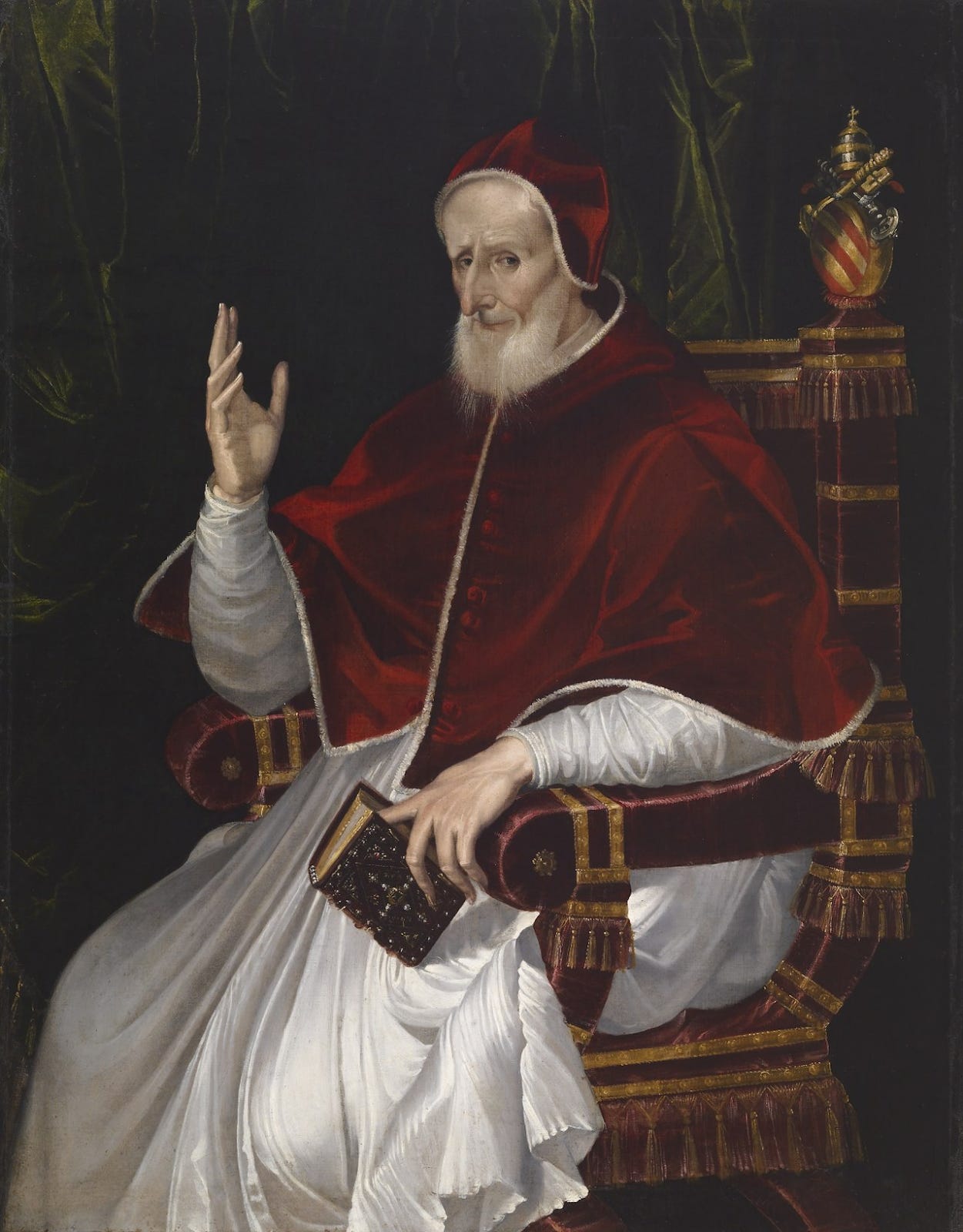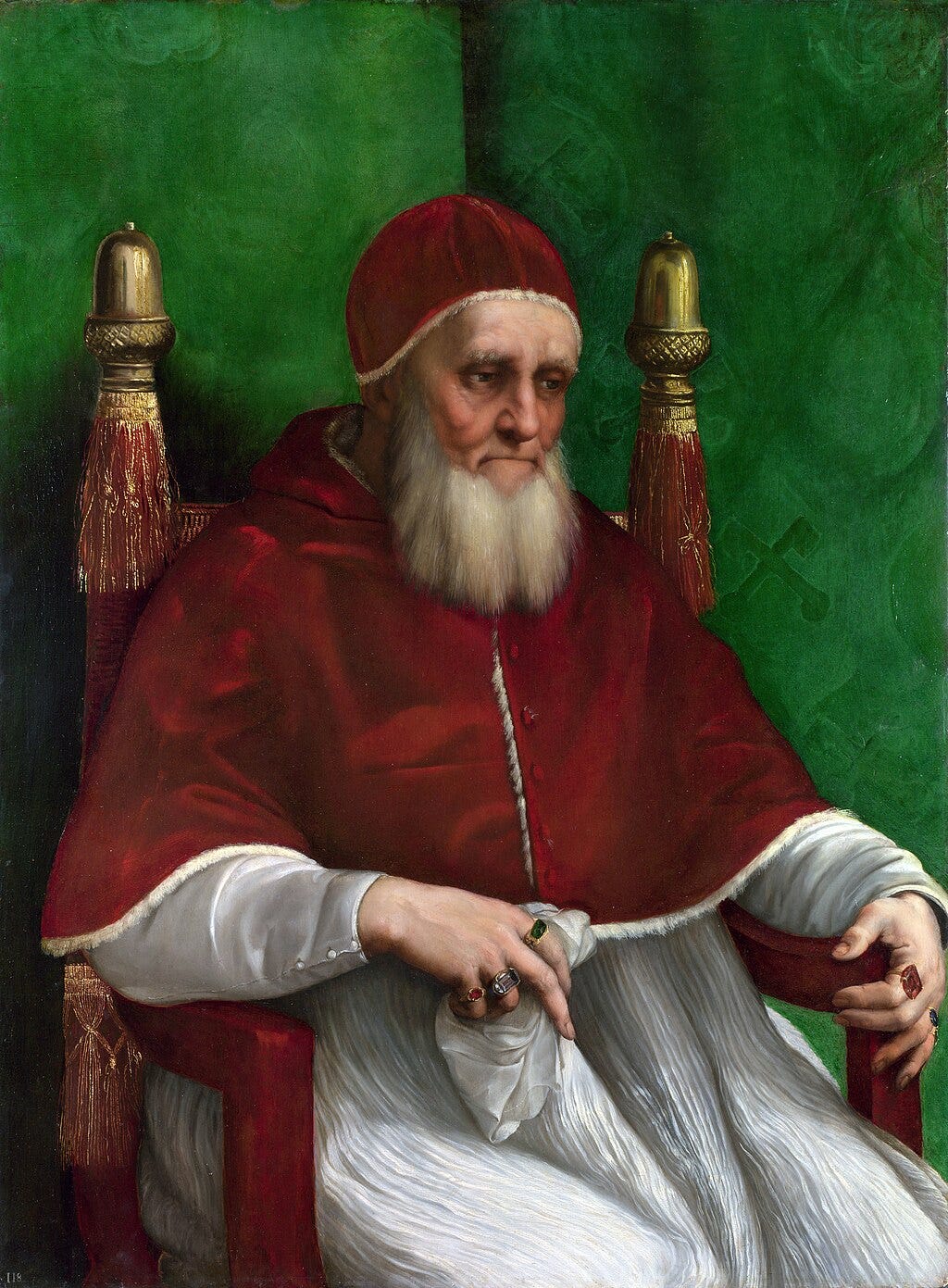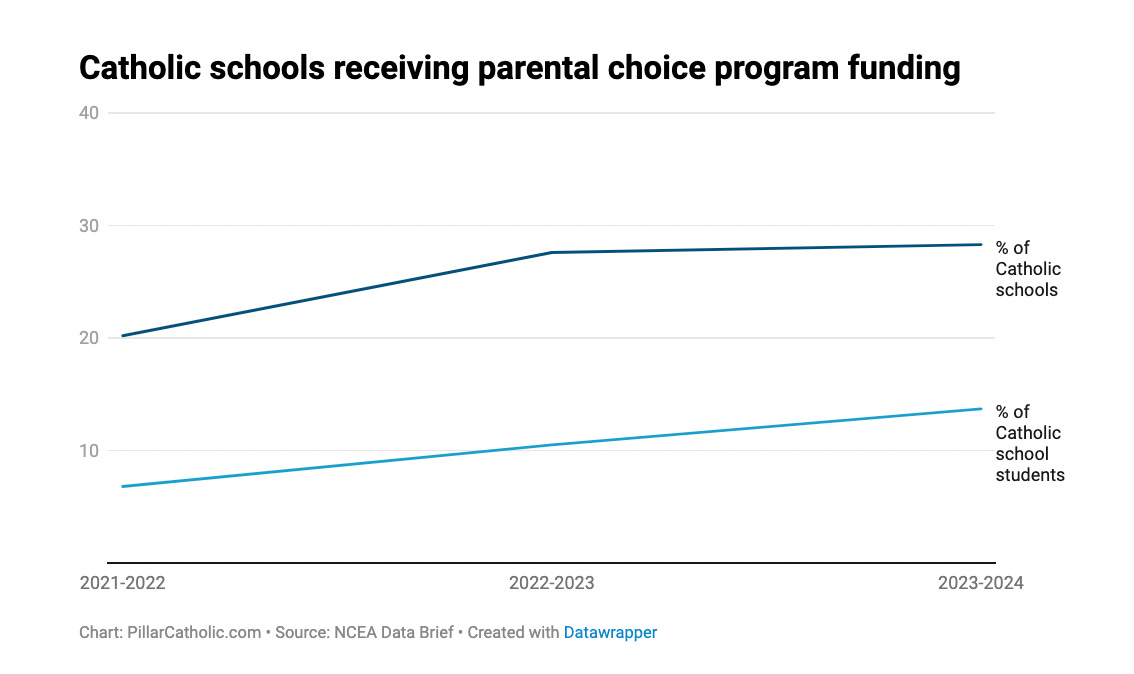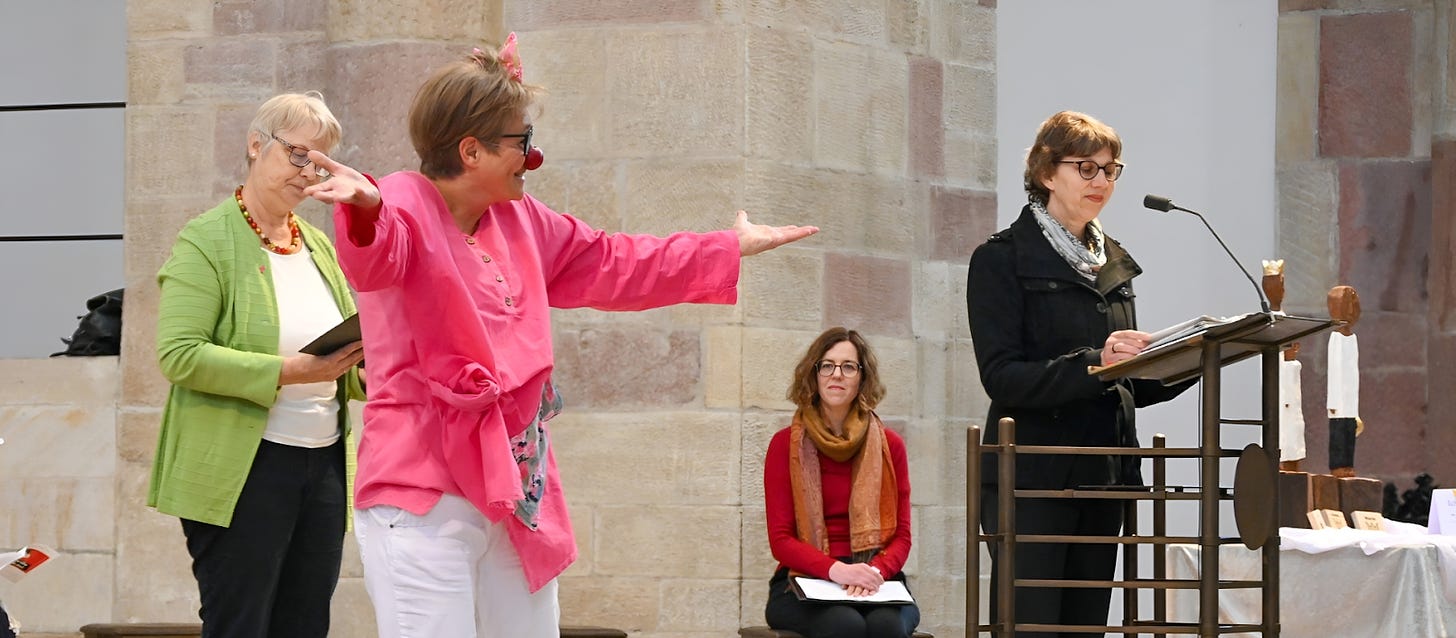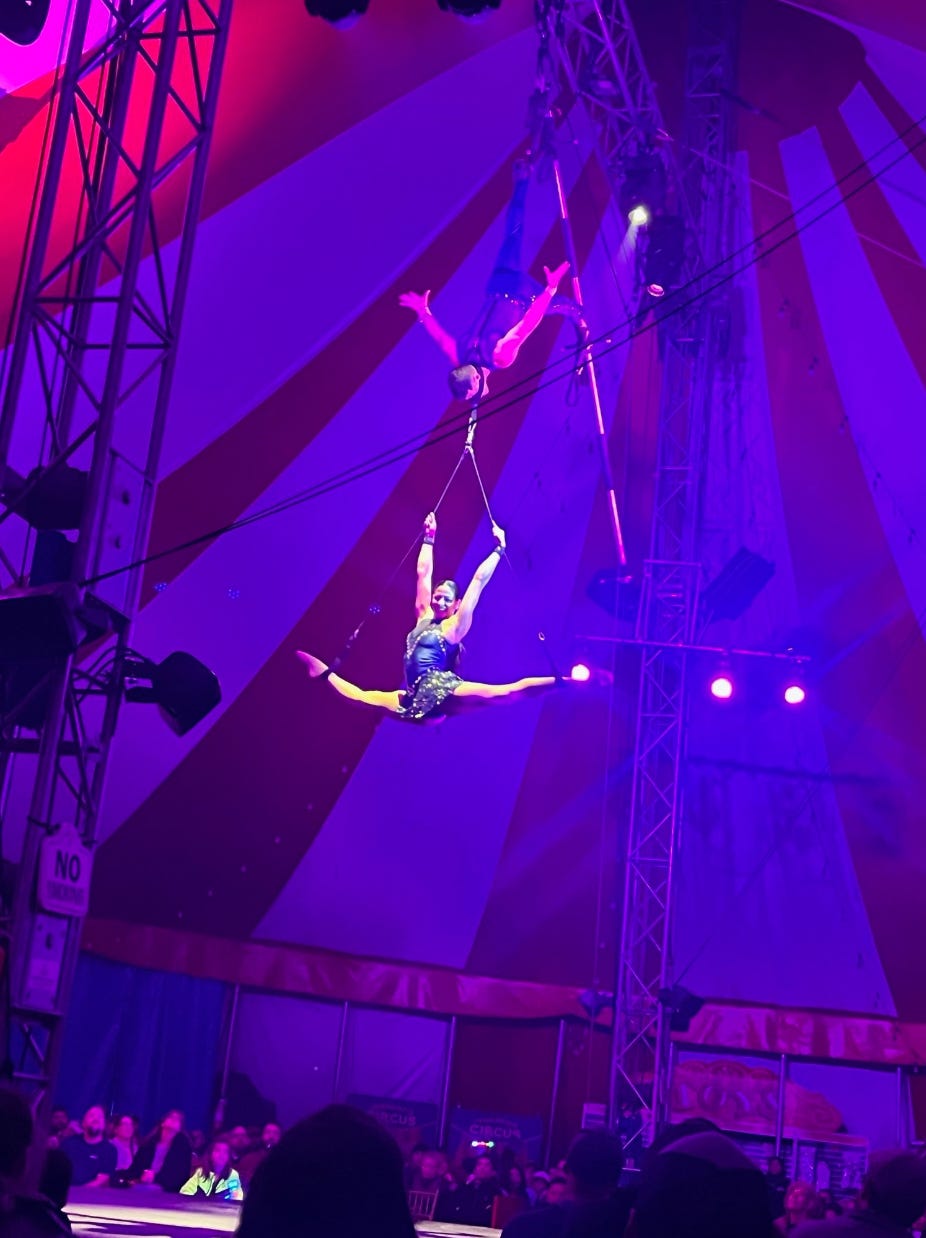Pillar subscribers can listen to this Pillar Post here: The Pillar TL;DR
Hey everybody,
Today is the feast of Pope St. Pius V, and you’re reading The Tuesday Pillar Post.
Pius V, pope from 1566 to 1572, did a lot in a short pontificate.
Elected soon after the Council of Trent concluded, Pius oversaw the founding of seminaries, published a new breviary, made liturgical reforms, promoted and spread the rosary, and made efforts to enforce discipline among clergy, especially in Europe.
The pontiff also organized European leaders to defend themselves against the Ottoman Empire, pushed back against the Protestant Reformation, and excommunicated Queen Elizabeth I of England, finding her to be in heresy.
In 1570, he promulgated a new Roman Missal, and mandated its use in most parts of the Latin Catholic Church. The Missal of Pius V eventually became known as the Tridentine Mass, because of the call for a missal at the Council of Trent.
But I want to tell you about what Pius V didn’t do.
See, the pontiff was a Dominican, one of four Dominican popes in the Church’s history. And when you hear people telling you about Pius, eventually someone will say that the pontiff began the custom of the pope wearing white cassocks — that, because he wanted to continue wearing white, as he had done in his Dominican habit, he began a practice which perdures until today.
But there really aren’t a lot of sources for that. In fact, a portrait of Pope Julius II, who reigned six decades before Pius, shows him in a red mozzetta and what appears to be a white cassock:
Now, that garment might look more like an alb to you, or a surplice, maybe. But it’s remarkably similar to the garment in which Pius V is depicted — in the very picture people point to when they say he’s responsible for pontiffs clad in white.
And there’s another issue with the Pius V/white cassock legend: The 1274 Ordo Romanus XIII, a ritual and liturgical text similar to the Roman Pontifical, mentions that the pope would put on a red mozzetta and a white cassock for his coronation.
Just a decade later, in 1284, a medieval liturgist named Bishop William Duranit, explained that the pope wore white because it “signifies innocence and charity,” while his external red garment “symbolizes compassion.”
So what did we learn? Pius V did a lot of cool and important stuff. Introducing the white papal cassock wasn’t one of them.
But maybe this makes Pius a very good patron saint for parish pastors and diocesan bishops: Like y'all, Pius has by now learned that people are pretty committed to attributing to him a practice with which he actually had very little to do, and for which his predecessors are most responsible.
Sound familiar?
In any case, he is now clothed in glory, and can pray for us. May his intercession strengthen the Church.
The news
The Vatican hasn’t officially confirmed the canonization, or indicated when it would be — but we’ve got a pretty good idea of when they’ll canonize him.
Read that, and a “Pier” pronunciation guide, right here.
—
Cardinal Fridolin Ambongo, a member of the pope’s C9 council of advisers, and a sharp critic of Fiducia supplicans, is under investigation in the Democratic Republic of Congo, for allegedly “seditious behavior” — namely his criticism of his country’s government.
Ambongo’s situation is complicated — as his country’s — but The Pillar’s Luke Coppen explains what’s going on, and why the cardinal’s safety could be at risk.
The Pillar reported Friday that CCHD’s available assets declined from nearly $36 million in 2019 to less than $9 million in 2022, and that the organization seems to remain in financial trouble.
Bishops are likely to discuss CCHD at their plenary meetings this year — though the extent of that conversation, regarding an often criticized USCCB project, remains to be seen.
The ordinariate has grown significantly in the past 13 years — it has more than 100 clerics, and a big place in the life of the Church in the UK. And the British ordinariate has taken a very different path than the ones established in the U.S. or Australia.
The Pillar talked with Fr. James Bradley, a priest of the Walsingham ordinariate, about its trajectory, and the significance of its most recent appointment.
—
Here’s a fun story you’ll like to read.
There are clearly defined rules, there’s a group text, there’s some trash talk going on, and there’s a noble goal — to actually get to know the people to whom they minister.
And to my view, there’s something particularly cool about the fact that young priests are prioritizing home visits — we live in the tyranny of the virtual, and the Church is susceptible to being overwhelmed by that. These young priests are insisting that real human encounter is at the heart of Christian communion, and they’re actually doing it. That should encourage you.
Right now the class of ‘22 is ahead. But for how long? That remains to be seen.
The National Catholic Education Association urges that Catholics advocate for tuition tax credits and other school choice programs.
But do they actually make a difference? Do they impact school enrollment?
—
In the U.S., we’re hearing a lot about Gaza right now, and much of it from people with very little actual knowledge of life in the Palestinian territories.
His parish compound is presently home to about 500 people who have no other place to go. People sleep in pews. They cook where they can. They figure out the logistics of bathrooms, and drinking water, and living with trauma. And the parish tries to center life around Mass and the rosary, every day.
But daily life at the parish is coordinated mostly by Romanelli’s parochial vicar. The pastor himself was in Bethlehem on October 7, when Gaza was cut off, and he’s been unable to return to his people.
He told The Pillar why that’s been hard, and what he hopes will happen for his parish.
—
Send in the clown. Just don’t misunderstand him
A meeting of women calling for diaconal ordination made headlines in Germany this week, as more than 350 people in attendance applauded a clown dance, offered with apparent sincerity, before the altar of Speyer Cathedral during a liturgy of the word service conducted by organizers.
The clown dance was reportedly meant to convey kinesthetically the women’s hope that God will bring new life to their calls for diaconal ordination, according to German reporting from the scene.
Again, I don’t doubt their sincerity. In fact, in 1985, the U.S. bishops’ committee on the liturgy taught that I shouldn’t question it, and neither should anyone else.
The bishops explained categorically that: “The sincerity of those involved in ‘clown ministry’ is not to be questioned,” adding that the liturgy committee “does not intend to impugn the good intentions or motives of those involved in ‘clown ministry.’”
Still, even while extending the appropriate olive branches to the clowning community, the bishops taught that “the clown has a place in the world of entertainment, or may be involved in works of charity such as visiting the sick in hospitals or those confined to nursing homes or homes for the elderly, or as a pedagogic aid in schools or in the religious education of children, or even in certain traditions of Christological reflection, [but] the clown as such is not to be understood as a liturgical minister.”
In the U.S., the “clown Mass” of yesteryear has mostly gone the way of the circus elephant: It’s a symbol of another time, enduring only in legends.
But apparently the women of Germany were not sufficiently informed. Or they felt that the U.S. bishops’ direction didn’t apply to them, coming, as they did, from an entirely different ecclesial context.
In any case, I read about all of this just a couple of days after I took my children on Saturday to a small family-run circus, which had set up its tent nearby as it made its annual stop in Colorado.
Our family loves the circus, and not only because of the Church’s long-standing closeness to circus performers.
We love it because the circus is awesome — quite literally. At a small circus, one can watch from just a few feet away as amazing feats of strength, daring, and artistry are performed, for the applause of just a few hundred people under the big top.
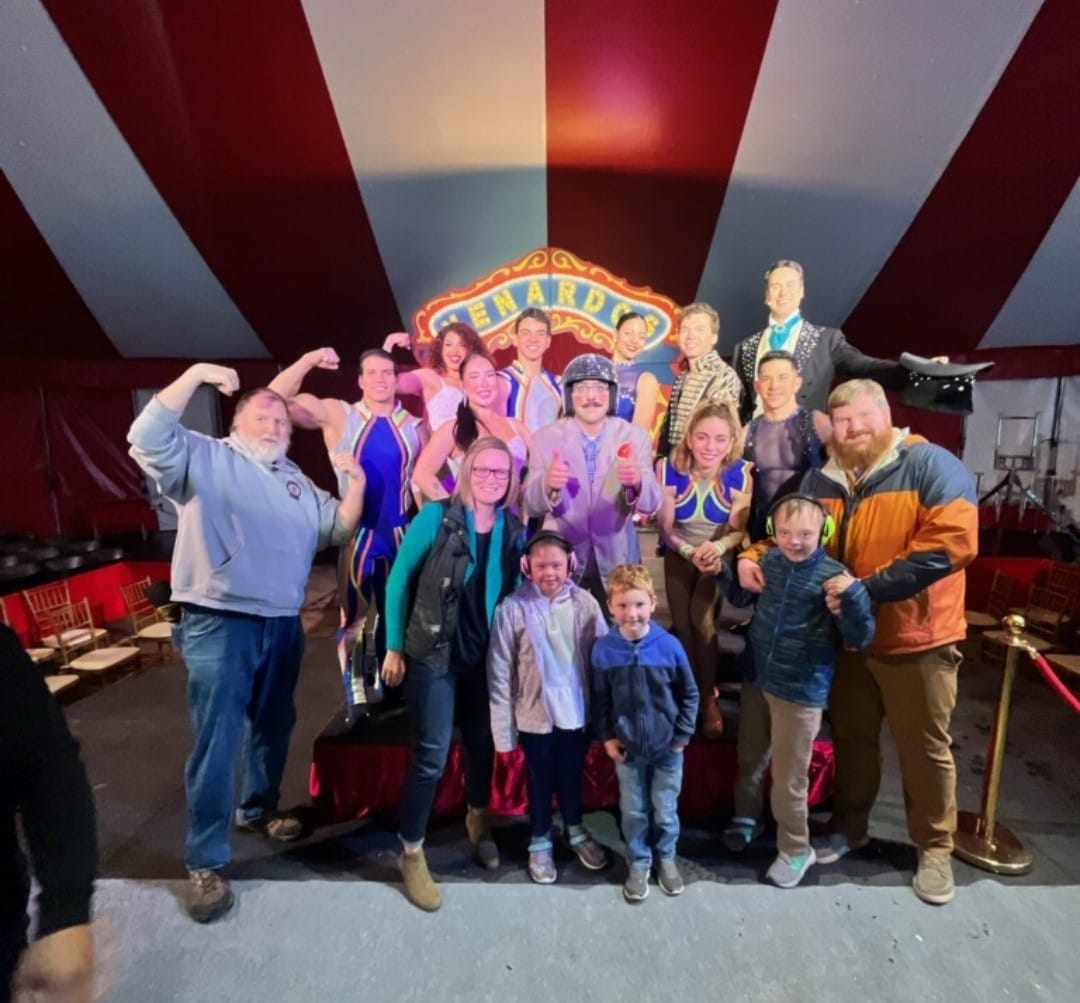
The circus has a kind of formulary all its own, a rubric that builds carefully towards a crescendo of extraordinary skill, leaving the audience in a state of wonder and awe.
The clown has a part to play in that rubric. He moves things along, he serves as a foil to the heroic feats of the other performers, he situates the audience somewhere between the acrobats’ greatness and his lowliness.
The clown is not usually a voice of hope — he is instead a reminder of our fallenness. His often self-confident incompetence stands in stark contrast to the humility with which the strongman, the juggler, or the acrobat plies a trade. He is a reminder of the folly of our pride and inflated egos.
It’s not just that clown liturgies are goofy. It’s that they misunderstand the symbol of the clown. His role in the circus is not to convey hope in something transcendent — instead he defies that, does what he wants, and he usually ends up with a pie in his face.
In other words, when the clown becomes the liturgical symbol of those who would reshape the Church in their own image, maybe they choose better than they intend. Not that I doubt their sincerity.
At any rate, take your family to the circus. This one is great. Just don’t put the clown in an alb.
Please be assured of our prayers. And please pray for us. We need it.
Yours in Christ,
JD Flynn
editor-in-chief
The Pillar

